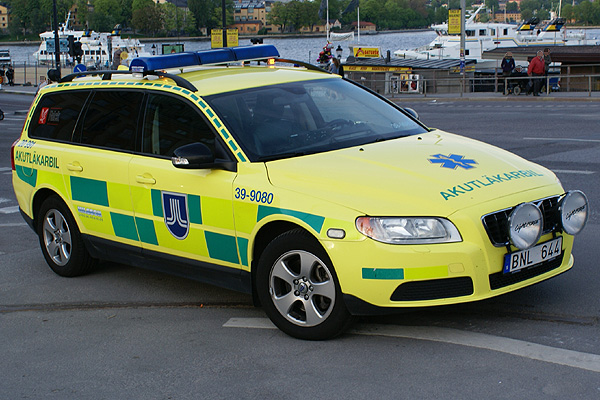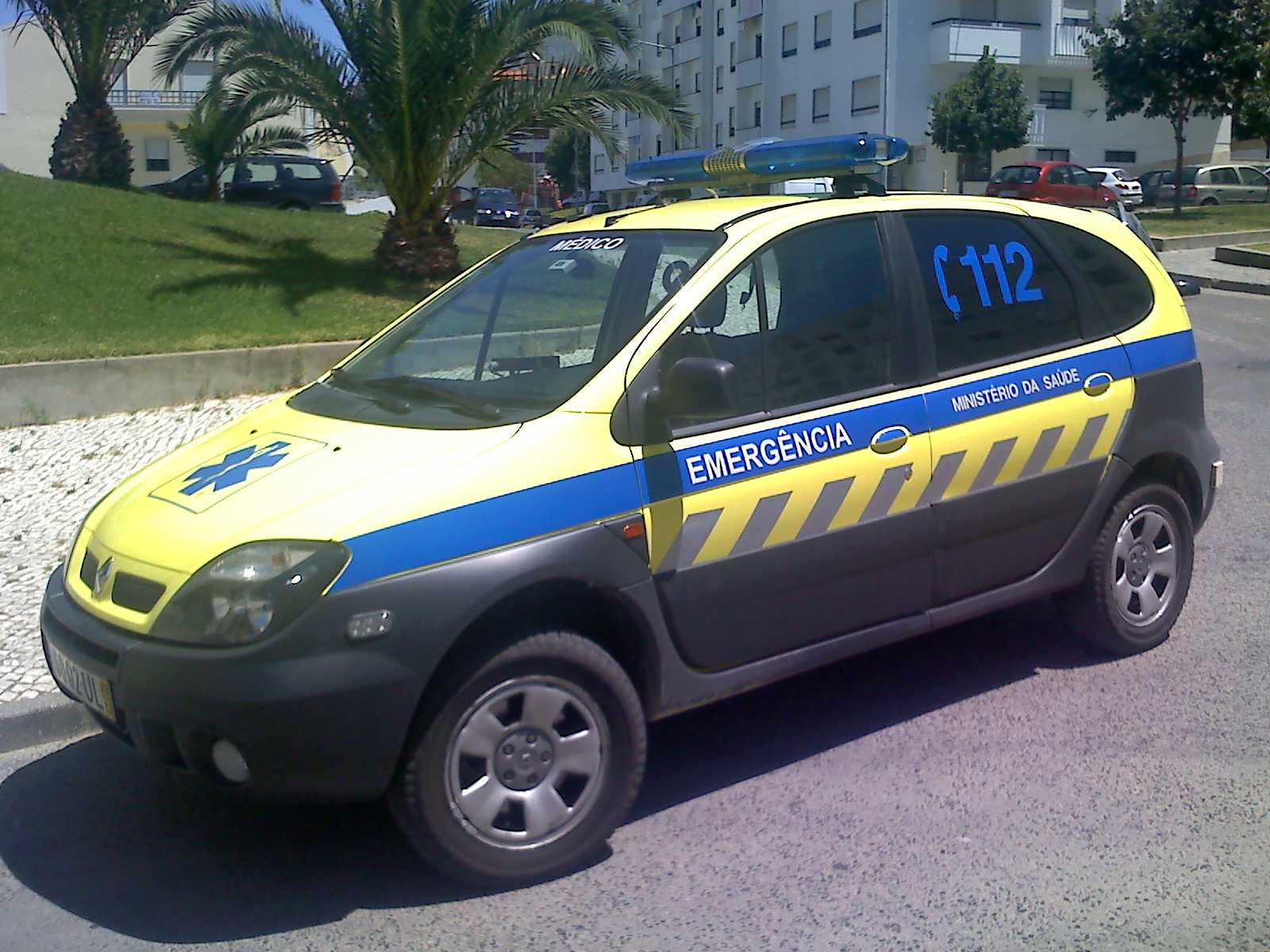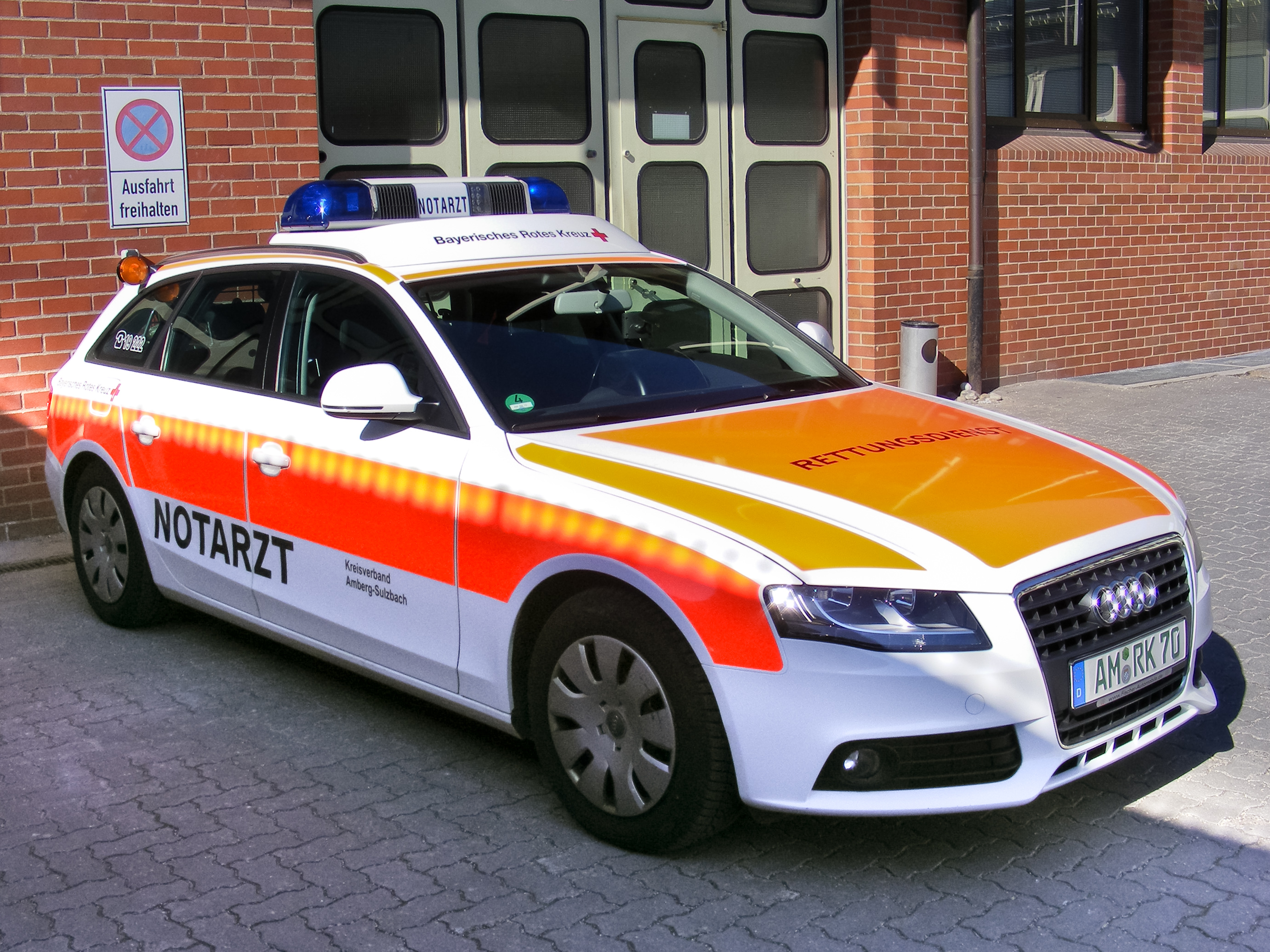Fly-car on:
[Wikipedia]
[Google]
[Amazon]
 A nontransporting EMS vehicle, also known as a fly-car, response vehicle, quick response service (QRS) vehicle, or fast response vehicle, is a vehicle that responds to and provides
A nontransporting EMS vehicle, also known as a fly-car, response vehicle, quick response service (QRS) vehicle, or fast response vehicle, is a vehicle that responds to and provides
 Non-transporting EMS vehicles come in many sizes and types, from bicycles and golf-carts that can access pedestrian walkways; to motorcycles that are able to fit through stopped or slow traffic; to sedans, station wagons, vans (referred to as "vanbulances"), and
Non-transporting EMS vehicles come in many sizes and types, from bicycles and golf-carts that can access pedestrian walkways; to motorcycles that are able to fit through stopped or slow traffic; to sedans, station wagons, vans (referred to as "vanbulances"), and
 A non-transporting EMS vehicle can help emergency medical organizations use their resources more efficiently, assessing an incident's severity (especially where there is reason to suspect the injury or illness is not serious) and either treating the patient at the scene and then releasing them or calling in additional help if required. This saves resources on several levels, as most non-transporting vehicles cost much less than full-size ambulances, and because they may be staffed by a single person (ambulances require a minimum of two crew members: a driver and an attendant). Non-transporting vehicles may be used by supervisors, who may need to move between calls to complete their supervisory duties, or by more highly or specially trained medical providers (e.g. a
A non-transporting EMS vehicle can help emergency medical organizations use their resources more efficiently, assessing an incident's severity (especially where there is reason to suspect the injury or illness is not serious) and either treating the patient at the scene and then releasing them or calling in additional help if required. This saves resources on several levels, as most non-transporting vehicles cost much less than full-size ambulances, and because they may be staffed by a single person (ambulances require a minimum of two crew members: a driver and an attendant). Non-transporting vehicles may be used by supervisors, who may need to move between calls to complete their supervisory duties, or by more highly or specially trained medical providers (e.g. a

 Several European countries, such as
Several European countries, such as
 A nontransporting EMS vehicle, also known as a fly-car, response vehicle, quick response service (QRS) vehicle, or fast response vehicle, is a vehicle that responds to and provides
A nontransporting EMS vehicle, also known as a fly-car, response vehicle, quick response service (QRS) vehicle, or fast response vehicle, is a vehicle that responds to and provides emergency medical services
Emergency medical services (EMS), also known as ambulance services or paramedic services, are emergency services that provide urgent pre-hospital treatment and stabilisation for serious illness and injuries and transport to definitive care. ...
(EMS) without the ability to transport patients. For patients whose condition requires transport (e.g. to a hospital), an ambulance
An ambulance is a medically equipped vehicle which transports patients to treatment facilities, such as hospitals. Typically, out-of-hospital medical care is provided to the patient during the transport.
Ambulances are used to respond to medi ...
is necessary. In some cases they may fulfill other duties when not participating in EMS operations, such as policing or fire suppression
Wildfire suppression is a range of firefighting tactics used to suppress wildfires. Firefighting efforts in wild land areas require different techniques, equipment, and training from the more familiar structure fire fighting found in populated ...
.
Vehicle types
 Non-transporting EMS vehicles come in many sizes and types, from bicycles and golf-carts that can access pedestrian walkways; to motorcycles that are able to fit through stopped or slow traffic; to sedans, station wagons, vans (referred to as "vanbulances"), and
Non-transporting EMS vehicles come in many sizes and types, from bicycles and golf-carts that can access pedestrian walkways; to motorcycles that are able to fit through stopped or slow traffic; to sedans, station wagons, vans (referred to as "vanbulances"), and SUV
A sport utility vehicle (SUV) is a car classification that combines elements of road-going passenger cars with features from off-road vehicles, such as raised ground clearance and four-wheel drive.
There is no commonly agreed-upon definiti ...
s that can carry almost as much equipment as an ambulance; to fire engine
A fire engine (also known in some places as a fire truck or fire lorry) is a road vehicle (usually a truck) that functions as a firefighting apparatus. The primary purposes of a fire engine include transporting firefighters and water to an ...
s that carry large crews and may carry specialized equipment. Essentially, any vehicle that lacks the ability to transport a patient may be used, depending on the needs of the local EMS system.
Purpose
 A non-transporting EMS vehicle can help emergency medical organizations use their resources more efficiently, assessing an incident's severity (especially where there is reason to suspect the injury or illness is not serious) and either treating the patient at the scene and then releasing them or calling in additional help if required. This saves resources on several levels, as most non-transporting vehicles cost much less than full-size ambulances, and because they may be staffed by a single person (ambulances require a minimum of two crew members: a driver and an attendant). Non-transporting vehicles may be used by supervisors, who may need to move between calls to complete their supervisory duties, or by more highly or specially trained medical providers (e.g. a
A non-transporting EMS vehicle can help emergency medical organizations use their resources more efficiently, assessing an incident's severity (especially where there is reason to suspect the injury or illness is not serious) and either treating the patient at the scene and then releasing them or calling in additional help if required. This saves resources on several levels, as most non-transporting vehicles cost much less than full-size ambulances, and because they may be staffed by a single person (ambulances require a minimum of two crew members: a driver and an attendant). Non-transporting vehicles may be used by supervisors, who may need to move between calls to complete their supervisory duties, or by more highly or specially trained medical providers (e.g. a physician
A physician (American English), medical practitioner (Commonwealth English), medical doctor, or simply doctor, is a health professional who practices medicine, which is concerned with promoting, maintaining or restoring health through th ...
or pain-management technician versus an emergency medical technician
An emergency medical technician (EMT), also known as an ambulance technician, is a health professional that provides emergency medical services. EMTs are most commonly found working in ambulances. In English-speaking countries, paramedics a ...
), saving those with higher or specialized training from being ensnared in calls that can be capably handled by responders with a more basic level of training.
Non-transporting vehicles can also be used to improve response times. In areas such as busy roads, smaller nontransporting vehicles are able to move through traffic faster than full size ambulances can. Some non-transporting vehicles may also have off-road capabilities, giving them access to areas that traditional ambulances cannot reach. Golf carts and similar vehicles provide access to grassy areas and inside large buildings, such as shopping mall
A shopping mall (or simply mall) is a North American term for a large indoor shopping center, usually anchored by department stores. The term "mall" originally meant a pedestrian promenade with shops along it (that is, the term was used to refe ...
s.
Fielding multiple non-transporting vehicles may enable the EMS system to increase the number of units it has available to respond without the greater costs (money and personnel) associated with full-sized ambulances. Adding EMS capabilities to preexisting police cars or fire engines yields similar results.
Examples

 Several European countries, such as
Several European countries, such as Germany
Germany,, officially the Federal Republic of Germany, is a country in Central Europe. It is the second most populous country in Europe after Russia, and the most populous member state of the European Union. Germany is situated betwe ...
, Belgium
Belgium, ; french: Belgique ; german: Belgien officially the Kingdom of Belgium, is a country in Northwestern Europe. The country is bordered by the Netherlands to the north, Germany to the east, Luxembourg to the southeast, France to th ...
and Austria
Austria, , bar, Östareich officially the Republic of Austria, is a country in the southern part of Central Europe, lying in the Eastern Alps. It is a federation of nine states, one of which is the capital, Vienna, the most populous ...
, with physician-led emergency services, there are Emergency Physician Rapid Response Cars (in German called ''NEF'' from ''Notarzteinsatzfahrzeug'' — "emergency physician deployment vehicle"), staffed with at least an emergency physician and a paramedic. These physicians are generally only called out to serious calls to coordinate multiple ambulances or provide intense on-scene care to serious or critical patients; paramedics and EMTs in ambulances generally can handle most calls by themselves.
In the Swedish medical system, a non-transporting vehicle (''akutbil'') can be equipped with a nurse
Nursing is a profession within the health care sector focused on the care of individuals, families, and communities so they may attain, maintain, or recover optimal health and quality of life. Nurses may be differentiated from other health c ...
specialized in anesthesia who is specialized in pain management, paired together with a paramedic. These vehicles can be staffed around the clock or during the busiest hours of the day and week in order to augment the capacity of the prehospital care
Emergency medical services (EMS), also known as ambulance services or paramedic services, are emergency services that provide urgent pre-hospital treatment and stabilisation for serious illness and injuries and transport to definitive care. ...
provider and can respond both independently and in conjunction with one or more ambulances, air ambulance(s) and other emergency services
Emergency services and rescue services are organizations that ensure public safety and health by addressing and resolving different emergencies. Some of these agencies exist solely for addressing certain types of emergencies, while others deal w ...
. As a result of new (circa 2013) legislation requiring all ambulances to be equipped with at least one trained nurse, non-transporting vehicles have become less common.
In Belgium, a non-transporting vehicle (called ''Mobiele Urgentiegroep (MUG)'' in Dutch
Dutch commonly refers to:
* Something of, from, or related to the Netherlands
* Dutch people ()
* Dutch language ()
Dutch may also refer to:
Places
* Dutch, West Virginia, a community in the United States
* Pennsylvania Dutch Country
People E ...
, ''Service Mobile d' Urgence et de Réanimation (SMUR)'' in French) is equipped with at least one emergency physician
An emergency physician (often called an "ER doctor" in the United States) is a physician who works at an emergency department to care for ill patients. The emergency physician is a specialist in advanced cardiac life support (advanced life suppor ...
and one nurse
Nursing is a profession within the health care sector focused on the care of individuals, families, and communities so they may attain, maintain, or recover optimal health and quality of life. Nurses may be differentiated from other health c ...
specialized in intensive and emergency care. Standard Belgian ambulances only have EMTs
An emergency medical technician (EMT), also known as an ambulance technician, is a health professional that provides emergency medical services. EMTs are most commonly found working in ambulances. In English-speaking countries, paramedics are ...
and/or nurses on board and only provide basic life support
Basic life support (BLS) is a level of medical care which is used for patients with life-threatening illnesses or injuries until they can be given full medical care by advanced life support providers (paramedics, nurses, physicians). It can be p ...
. Non-transporting vehicles are only sent out for serious emergencies like drug overdoses and cardiac arrest
Cardiac arrest is when the heart suddenly and unexpectedly stops beating. It is a medical emergency that, without immediate medical intervention, will result in sudden cardiac death within minutes. Cardiopulmonary resuscitation (CPR) and poss ...
s and provide advanced life support
Advanced Life Support (ALS) is a set of life saving protocols and skills that extend basic life support to further support the circulation and provide an open airway and adequate ventilation (breathing).
Components
These include:
* Tracheal in ...
on top of the services provided by ambulance crews.
In France
France (), officially the French Republic ( ), is a country primarily located in Western Europe. It also comprises of overseas regions and territories in the Americas and the Atlantic, Pacific and Indian Oceans. Its metropolitan area ...
, emergency medicine is generally handled by two services, the Fire Department red ambulances which provide basic life support, and Hospital-based yellow or white vehicles who provide advanced life support ambulances and emergency physicians who use fly-cars. In the French model of prehospital care, doctors may remain on scene to attempt procedures to stabilise patients prior to transport.
In the United States
The United States of America (U.S.A. or USA), commonly known as the United States (U.S. or US) or America, is a country primarily located in North America. It consists of 50 states, a federal district, five major unincorporated territori ...
, several fire departments and private ambulance services have fly-car programs. The Fire Department of the City of New York
The New York City Fire Department, officially the Fire Department of the City of New York (FDNY), is an American department of the government of New York City that provides fire protection services, technical rescue/special operations services, ...
(FDNY) added EMS capabilities to many of their fire engines, effectively adding dozens of EMS units to their fleet without having to purchase or staff additional ambulances. In 2016, the FDNY launched a formal EMS fly-car program to reduce EMS response times; this practice was suspended in March 2020 due to the COVID-19 pandemic
The COVID-19 pandemic, also known as the coronavirus pandemic, is an ongoing global pandemic of coronavirus disease 2019 (COVID-19) caused by severe acute respiratory syndrome coronavirus 2 (SARS-CoV-2). The novel virus was first identi ...
. The program received criticism from the FDNY EMS union, which argued that the fly-car program siphoned personnel and resources from the regular EMS ambulance service. Hatzalah
Hatzalah (; he, הַצָּלָה, lit=rescue, relief) is one of several Jewish volunteer emergency medical service (EMS) organizations serving mostly areas with Jewish communities around the world, giving free medical service no matter their ...
, a Jewish volunteer EMS in New York City
New York, often called New York City or NYC, is the most populous city in the United States. With a 2020 population of 8,804,190 distributed over , New York City is also the most densely populated major city in the Un ...
, operates a two-tiered dispatch model where EMTs and paramedics respond to a call in their fully equipped private vehicles acting as fly-cars, while an ambulance is brought for transport if necessary.
In Israel
Israel (; he, יִשְׂרָאֵל, ; ar, إِسْرَائِيل, ), officially the State of Israel ( he, מְדִינַת יִשְׂרָאֵל, label=none, translit=Medīnat Yīsrāʾēl; ), is a country in Western Asia. It is situated ...
, Magen David Adom
The Magen David Adom ( he, מגן דוד אדום, abbr. MDA, pronounced ''MAH-dah'' per its Hebrew acronym, ) is Israel's national emergency medical, disaster, ambulance and blood bank service. The name means "Red Shield" or "Red Star of Dav ...
and other EMS organizations use motorcycles
A motorcycle (motorbike, bike, or trike (if three-wheeled)) is a two or three-wheeled motor vehicle steered by a handlebar. Motorcycle design varies greatly to suit a range of different purposes: long-distance travel, commuting, cruising ...
as non-transporting EMS vehicles to reach patients.
See also
*Ambulance
An ambulance is a medically equipped vehicle which transports patients to treatment facilities, such as hospitals. Typically, out-of-hospital medical care is provided to the patient during the transport.
Ambulances are used to respond to medi ...
* Motorcycle ambulance
Motorcycle ambulances are a type of emergency vehicle which either carries a solo paramedic or first responder to a patient; or is used with a trailer or sidecar for transporting patients. Because of its size and performance, a motorcycle ambul ...
* Air medical services
Air medical services is a comprehensive term covering the use of air transportation, aeroplane or helicopter, to move patients to and from healthcare facilities and accident scenes. Personnel provide comprehensive prehospital and emergency and cri ...
References
{{Emergency medical services Ambulances